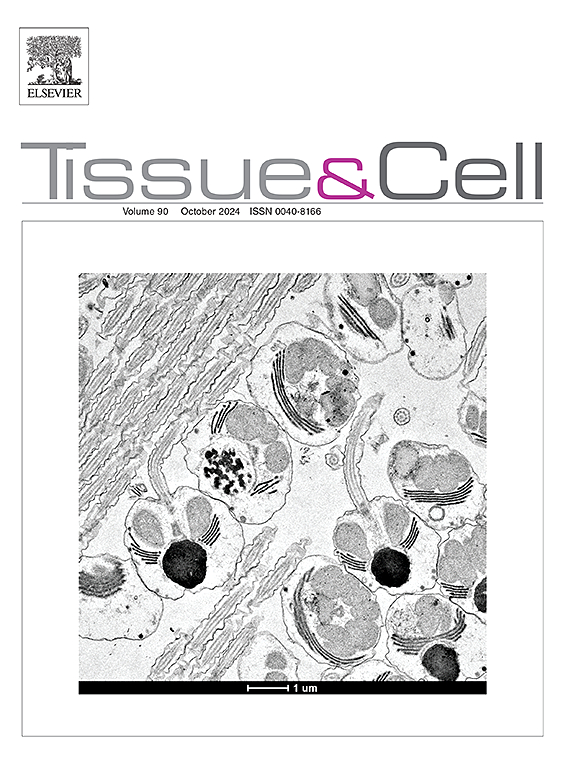Unraveling the role of HIF-1α in allergic rhinitis: A key regulator of epithelial barrier integrity via PI3K pathway
IF 2.7
4区 生物学
Q1 ANATOMY & MORPHOLOGY
引用次数: 0
Abstract
Background
Allergic rhinitis (AR) ranks among the most prevalent nasal disorders worldwide. Epithelial cells are the initial physiological barrier against allergen entry, and play a vital protective role. The precise role of hypoxia-inducible factor 1-alpha (HIF-1α) inhibitors in nasal epithelial cell injury in AR is still unknown, despite their confirmed association with nasal inflammation in AR models.
Methods
An interleukin-13 (IL-13)-induced AR cell model has been employed to investigate how HIF-1α inhibition impacts nasal epithelial cells (JME/CF15). Cell viability, inflammatory cytokines, mucosal remodeling factors, and the tight junction protein zonula occludens-1 (ZO-1) were evaluated using cell counting kit-8, enzyme-linked immunosorbent assay, Western blot, and immunofluorescence. The influences of phosphoinositide 3-kinase (PI3K) and mitogen-activated protein kinase (MAPK) pathways have been examined.
Results
PX-478 (a HIF-1α inhibitor) alleviated IL-13-induced epithelial barrier dysfunction by upregulating ZO-1 and reducing levels of inflammatory and remodeling factors. Mechanistically, HIF-1α activated the PI3K/MEK signaling pathway, exacerbating epithelial barrier disruption and inflammatory responses. Knockdown of HIF-1α suppressed PI3K pathway activation, mitigating inflammation and restoring barrier integrity. However, these protective effects were reversed by a PI3K agonist.
Conclusions
HIF-1α aggravates AR by promoting inflammation, mucosal remodeling, and epithelial barrier dysfunction via PI3K pathway activation. This finding not only enriches our understanding of AR pathophysiology but also highlights HIF-1α and its downstream signaling pathways as prospective therapeutic targets for AR.
求助全文
约1分钟内获得全文
求助全文
来源期刊

Tissue & cell
医学-解剖学与形态学
CiteScore
3.90
自引率
0.00%
发文量
234
期刊介绍:
Tissue and Cell is devoted to original research on the organization of cells, subcellular and extracellular components at all levels, including the grouping and interrelations of cells in tissues and organs. The journal encourages submission of ultrastructural studies that provide novel insights into structure, function and physiology of cells and tissues, in health and disease. Bioengineering and stem cells studies focused on the description of morphological and/or histological data are also welcomed.
Studies investigating the effect of compounds and/or substances on structure of cells and tissues are generally outside the scope of this journal. For consideration, studies should contain a clear rationale on the use of (a) given substance(s), have a compelling morphological and structural focus and present novel incremental findings from previous literature.
 求助内容:
求助内容: 应助结果提醒方式:
应助结果提醒方式:


